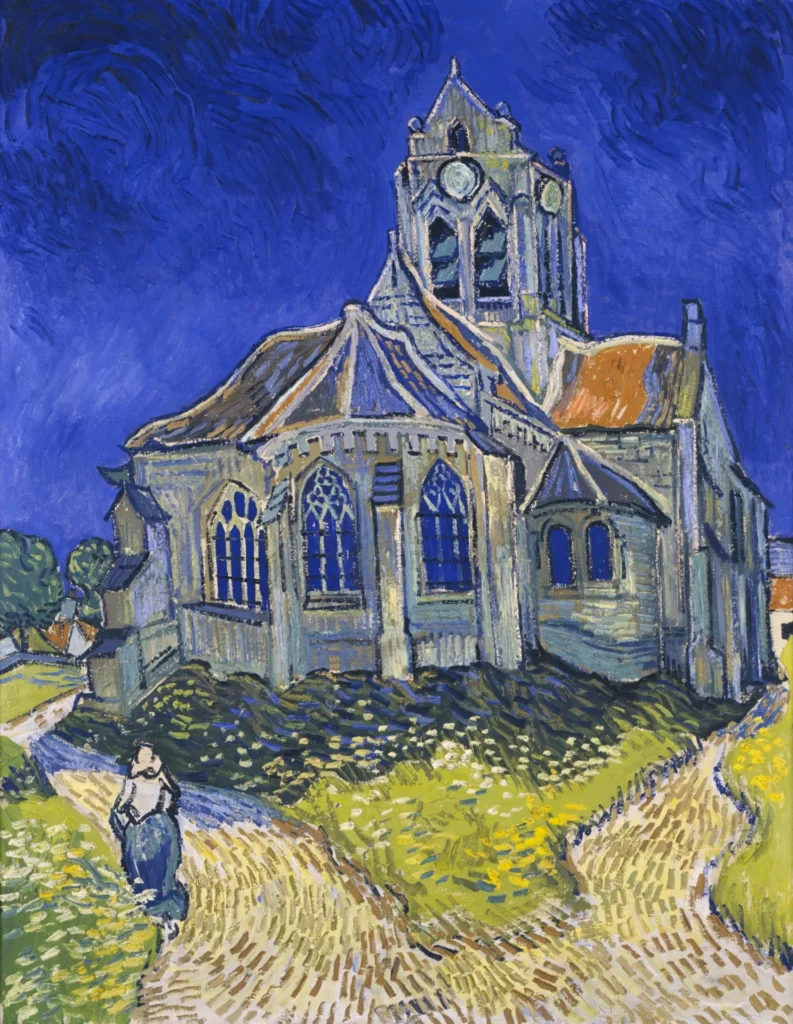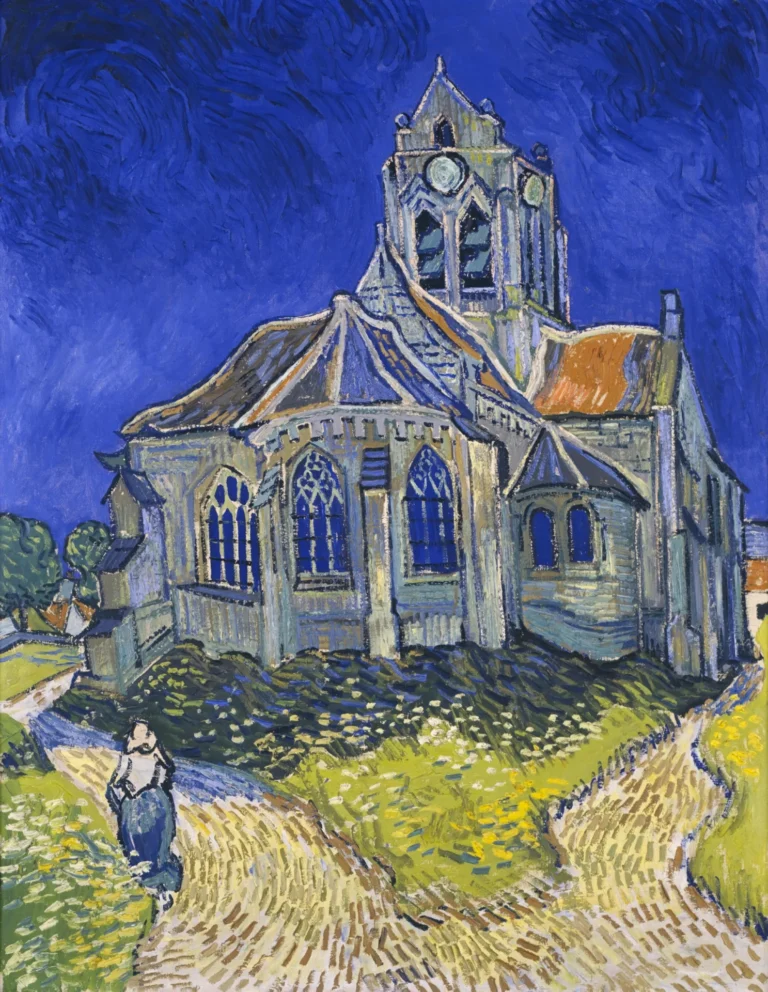The Church In Auvers-Sur-Oise, View From The Chevet (1890)
This captivating painting shows Église Notre-Dame-de-l'Assomption in Auvers-sur-Oise, portrayed in Van Gogh's characteristic vivid colors that evoke a sense of emotion and atmosphere. Painted during the last months of his life, it's a significant work within his oeuvre, measuring 94 cm x 74 cm and featuring a striking use of violet and orange hues. The church, set against a deep blue sky, conveys not just Van Gogh's artistic vision but also his complex relationship with themes of spirituality and personal turmoil.
June 1890
About the Artwork
Created in the summer of 1890, while Van Gogh battled mental health issues, The Church in Auvers-sur-Oise, View from the Chevet reflects the artist's life in turmoil. Having moved to Auvers-sur-Oise under the care of Dr. Paul Gachet, this painting emerged from a prolific period during which he produced around seventy works in just two months. The church holds personal significance, symbolizing both a place of worship and ultimately, a reflection of his life's challenges. The vibrant colors and distorted forms of the church speak to the depths of his feelings, symbolizing a life lived on the edge of reality and imagination.










